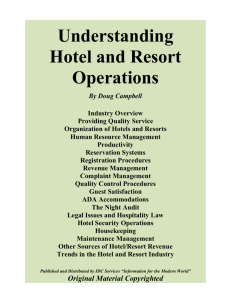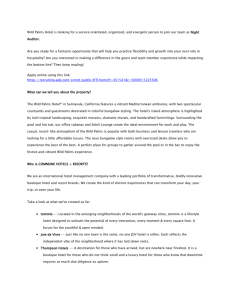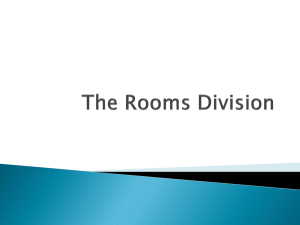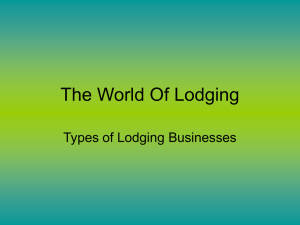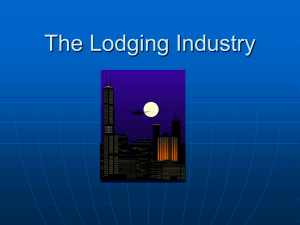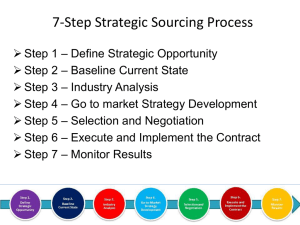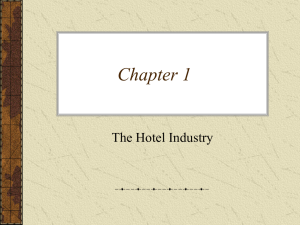Chapter 2
advertisement
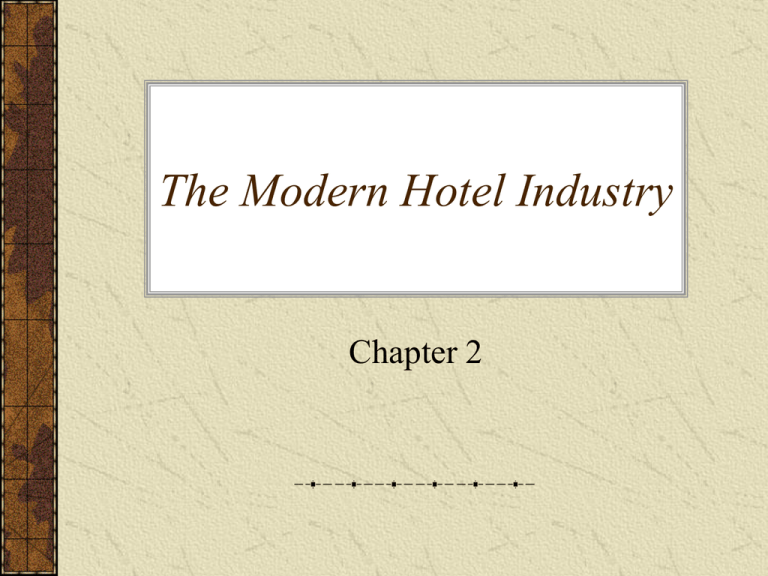
The Modern Hotel Industry Chapter 2 Patterns in the Lodging Industry Product Market Ownership Management The four patterns are actually interlaced. Change in one invariably impacts another. New Product Patterns Segmentation – The lodging industry uses segmentation to mean different products, hotel types. Brand – Customer recognition defines a brand: recognition of the name and logo. Brand Equity – The inherent value that the shopper’s recognition gives to the brand. A Segmented Industry New Product Segments Economy (Budget, or Limited-Service) Hotels – Amenities and Amenity Creep • An amenity is a special extra used to distinguish the property from its competitors. • The history of the industry’s ever-improving levels of service is the story of amenity creep. – How Budgets Compete • Forgo some amenities • Smaller rooms New Product Segments cont’d All-Suite Hotels – Appeal is 2 rooms for the price of one. – Extended Stay • Original concept of the all-suite hotel • Have higher occupancies and lower ADRs – Corporate Housing • Exempt from local room taxes • Permitted in areas not zoned for hotels Mixed Use Projects and Other Hotel Segments Apartments, hotels, resorts, condos, shopping marts & business towers merge into one development=mixed-use concept Casino/Hotels – Different focus from traditional hotels: gaming revenue is the major income producer, not room sale. – Becoming lodging’s dominant segment Mixed Use Projects and Other Hotel Segments cont’d Conference Centers – Highly specialized facilities designed for meetings and conferences – Rates are bundled: guest rooms, meeting rooms, food, drinks and equipment Spas – Essence of the spa experience is health – Seven spa types: club, cruise-ship, day, destination, medical, mineral springs, resort/hotel New Market Patterns Marketing to the Individual Guest – Guest Profiles • Knowing guests in various circumstances, developing profiles, enables hoteliers to manage a variety of market segments – Business/Leisure Travelers • All guests display some degree of elasticity Marketing to the Individual Guest cont’d The International Guest – World Tourism Organization (WTO) forecasts 102 million visitors to the US by 2020. Preferred Guest Programs – Guests earn points with hotel chains. Nonguest Buyers – Are intermediaries who buy guest rooms. Marketing to the Group Tourist/Leisure Visitors – The Tour Package • The wholesaler (nonguest buyer) handles the mass movement of leisure travelers. • They buy at wholesale prices because they buy in quantity – The Inclusive Tour (IT) Package • Involve financial risks (air & land transportation) outside the hotel’s control Marketing to the Group cont’d Business/Commercial Groups – SMURF = societies, medical, university, religious, fraternal organizations • • • • Conventions Trade Shows The Single Entity Incentive Tours New Ownership Patterns The State of Industry – Turmoil & Churning • Income tax laws changed in the 1970’s • Churning = rapid buying and selling – A Consolidating Industry • Consolidation promises economies of scale, larger marketing & distribution networks for the chains. Ownership & Financing Alternatives Individual Ownership Real Estate Investment Trusts (REITS) – Public companies that raise capital through the sale of stock Condos & Timeshares – Condos are real estate purchases, time shares are not. New Management Patterns Hotel Chains – 75% of all hotels are under the flag of chains. – insert Exhibit 2-14 Hotel Chains cont’d Parties to the Deal 1. 2. 3. 4. Developer Financier Ownership (equity) Management company Management Contracts & Management Companies Contracts – Agreement between the hotel owner & a management company Management companies – Grew important because of 3 different events • Great Depression • Oil Embargo of 1973 • Banking system collapse of 1980’s Management Contracts & Companies cont’d Leasing (Renting) – Are popular when times are good Franchising – Franchise fees have almost doubled during the past 20 years. – They now represent 9% to 10% of room sales – some 8% of sales from all sources Summary Hotelkeeping opens the 21st century at the peak of its cycle. The 21st century will build on the dynamic changes in products, markets, financing and operations that continue to reshape this ancient industry.



